M. Stanley Whittingham
Biographical
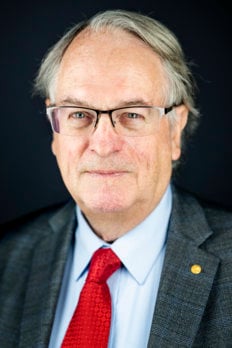
I was born on December 22, 1941 in the Carlton suburb of Nottingham in England in the middle of the Second World War. My father, William Stanley Whittingham, was a civil engineer and the first in the family to go to college, and my mother Dorothy Mary (née Findley) was a chemist before marriage. My father was responsible for repairing the runways in East Anglia, so we were constantly on the move. I spent my childhood in Lincolnshire county attending primary school in Grimsby and travelled each day by train and bus from home to school. When I was around age 10, the family moved to Swallow Hill House in Thurlby, near Bourne.
Looking east from our house the next higher hill was in Germany, as we were on the edge of the fens. I attended Stamford School in Stamford, about 8 miles away. Stamford is a medieval town then on the main A1 road from London to Edinburgh; it was my father who was in charge of building the by-pass around the town, that eliminated the need to go through the alternating one-way street in the center of town. It was there that I got attracted to science through the inspired teaching of Major Lamb and Squibs Bowman in chemistry and physics respectively. The school had a well-equipped new science building. The school and my teachers in 1960 are shown in Figure 1. The school dates from 1532, and its chapel (formerly known as St Paul’s church and shown in Figure 1) originated in 1152. The St. Paul’s Street in front of the school is named after the church. School days started with chapel at 8:45 am, and finished at 3:45 pm six days a week, with Wednesday and Saturday afternoon reserved for sports. I remember Squibs Bowman started a sailing club at a local gravel pit, and I got deeply involved in that. But my parents got totally hooked, so they took up sailing in the English Channel when they retired to Flushing in Cornwall. It was at this time that I got very interested in growing cacti, and my family built a greenhouse at our house so I could grow my hundreds of them, together with more useful tomato plants which I sold to neighbors. I still grow cacti and am an active member of the Desert Botanical Garden in Phoenix, Arizona where my daughter and her family live.
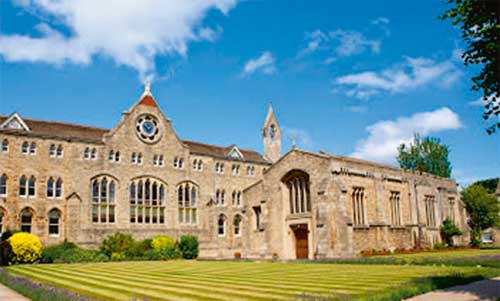
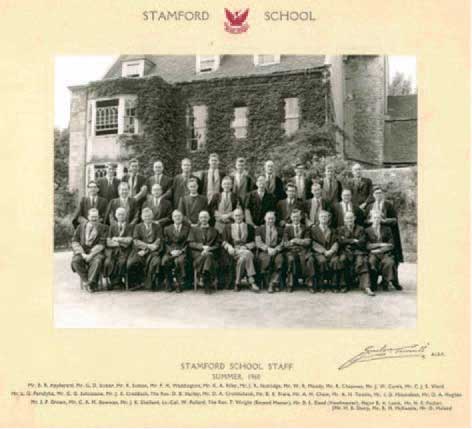
Figure 1. Stamford School (top) and staff (bottom) in 1960.
Courtesy of Stamford School.
Courtesy of Stamford
School.
In the autumn of 1959, I went for several days to Oxford to take the entrance examination, which included several languages as well as chemistry, physics and mathematics. After I was offered admission to New College in Oxford University to study chemistry, Headmaster Basil Deed tutored me in Latin to pass the then required classics examination before I could go to Oxford in October 1960.
College
Arriving in Oxford, I took the 1st Public Examination. This was followed by the Final week-long examinations after three years of study. A fourth year was spent doing full-time research. The college rooms were somewhat rudimentary then, with no running water. A “scout” brought a bowl of hot water each morning to my room to wash and shave with. Breakfast was served in the hall until 9 am, and the lectures that also started at 9 am were in the University chemistry buildings a good 10–15 minutes’ walk away. These were not mandatory but were very helpful for the weekly tutorials. Each week I prepared a lengthy paper on the weekly topic and then presented and discussed it with my tutor for an hour. I still remember going to Peter Dickens’ lodgings in the College each Sunday morning for this, and his wife Mary would prepare biscuits and tea. Although life at Oxford afforded much time to watch 1st class cricket in the Parks behind the Science buildings, much time was spent in doing required laboratory experiments.
At New College, my key tutor was Peter Dickens, under whom I would do my Part II undergraduate research and my D. Phil. Peter attracted me to Solid State Chemistry. Also, at that time metallurgy was part of the Inorganic Chemistry Department, so I took metallurgy classes from William Hume-Rothery, who was deaf at that time but whose lectures were intriguing. Those were exciting times, with the US Air Force Office of Scientific Research in London supporting my undergraduate research on the recombination kinetics of oxygen atoms on the tungsten oxide bronzes. This was the sputnik era, and there was interest in possible atomic reactions on the nose cones of satellites. This work resulted in my first publication in the Transactions of the Faraday Society.
For my D. Phil. studies I won a Gas Council scholarship to study catalysts to convert coal gas to natural gas. However, just before starting this research the UK struck natural gas in the North Sea and the Gas Council gave me the freedom to do whatever research I liked. I studied the reduction by hydrogen of the same tungsten bronzes and a range of tungsten oxides and discovered how the fast ionic mobility of the alkali ions dictated the reduction reaction pathway.
Postdoctoral studies
In 1968, I moved to the materials center at Stanford University in California to work with Robert Huggins on advanced materials. After about three months there, Bob moved to Washington, DC for a two-year stint as Program Officer for the Materials Research Centers. I became the de-facto leader of his group for those two years, a great learning experience. There I studied the fast ion transport of alkali ions in the recently discovered beta-alumina materials, amongst other compounds, using the mixed conducting tungsten bronzes as electrodes. For this beta alumina work, I received the young author award of the Electrochemical Society. I still remember going to the Shamrock Hotel in Houston to pick up the award at a black-tie dinner. Norman Hackerman was President of the Electrochemical Society, and he brought in the Texas Rangers on their horses to the reception around the hotel pool.
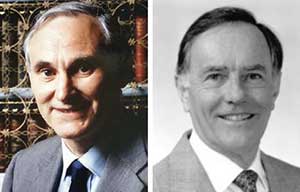
Figure 2. Key advisors: Peter Dickens, Oxford University (died December 2019), and Robert Huggins, Stanford University.
At Stanford I met Georgina Andai on a trip to the San Francisco Opera in August 1968 organized by the Bechtel International Center. Georgina had just arrived from Queens College in New York to study for her graduate degree in Latin American Literature. Georgina was an immigrant from Budapest, Hungary by way of South and Central America. We were married in the Stanford Chapel on March 23rd, 1969, and spent our honeymoon travelling around four of the Hawaiian Islands. About a month later, we spent a week at a solid-state chemistry meeting in Scottsdale, Arizona at a Moorish looking hotel, organized by Leroy Eyring and Mike O’Keefe. The field was just taking-off in the USA, unlike Europe where it was strong. We had two children whilst at Stanford, Jenniffer and Michael. We were the first family living in Stanford married student housing, where the wife was the student. I still remember the looks when I went to a spouses meeting – what are you doing here? When our second child was born, we rented a home on Maureen Avenue in Palo Alto, a nice two-bedroom house with a garden where the children could play winter or summer. Just before we left California, our landlady offered to sell us the home for $30,000! Last year, we celebrated our 50th Anniversary in Bermuda, and rented one of the first electric vehicles on the island and learnt all about range anxiety (Figure 3).
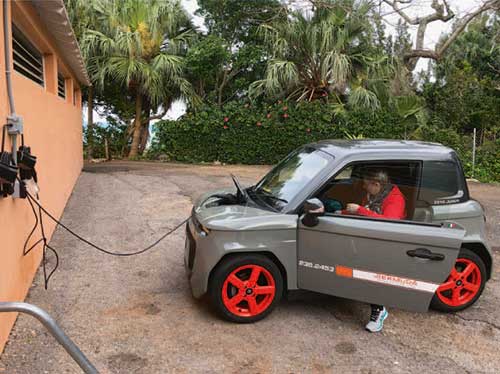
Figure 3. Charging our electric vehicle in Bermuda in March 2019.
Exxon Corporate Research Laboratory
In 1972, I moved to the newly formed Corporate Research Laboratories of Esso (now ExxonMobil), who were initiating research efforts in energy beyond petroleum and chemicals. It was there, whilst working with such key scientists as Fred Gamble and Arthur Thompson in a very vibrant and intellectually stimulating interdisciplinary group, that I discovered the key role that intercalation played in the reversibility of chemical reactions. I was asked to describe this finding to a committee of the Exxon Board of Directors in New York; this would be described today as an elevator pitch. Within a week, Corporate Research was given the go-ahead to build a team to develop this invention. Exxon treated research like drilling an oilwell; not all will work, but some will but for success serious investment was needed. They did this and established a large lithium battery engineering, development and manufacturing effort. That effort resulted in the first rechargeable lithium-ion batteries, which was published in Science in 1976, some three years after the patents were filed.
The field of solid-state electrochemistry was just getting started due to materials scientists getting involved in energy research. One of the earliest international meetings in the area was a two-week NATO conference in Belgirate, Italy in 1972 which had many junior scientists present but also senior legends like Carl Wagner, the father of defects in solids. I was sitting next to him in the conference photo. Some 20 years later, when this meeting was repeated the field had dramatically changed – the lithium battery had arrived. I still remember arriving at the hotel in Belgirate and commenting to the owner that we had been there 20 years earlier and he said let me check. He went to his file cabinet, and pulled out a photograph of the earlier meeting, and saying there you are.
At that time, the journals available for publishing our work were limited. Materials Research Bulletin tended to be a favorite for both myself and John Goodenough. So North-Holland in the late 1970s proposed that I and Hans Rickert from Germany start a new journal for the field of ion transport in solids. I said there was no need. They responded by saying let’s do a survey of the field. Well, the field voted over 90% in favor of a journal, and the first issue of Solid State Ionics was published in 1980. I remained Principal Editor for 20 years. At that time the journal published in English, French and German.
At Exxon, I moved from a bench scientist to group head to Director of the Solid State and Catalytic Sciences Laboratory in Corporate Research. Then in the early 1980s I became Manager of the Chemical Engineering Technology Division of Exxon Engineering, which at that time was expanding fast in order to explore synthetic fuels, such as shale oil and coal liquefaction/gasification. An interesting assignment that certainly was a broadening experience, but not really aligned with my interest in research. After a brief period in research at Schlumberger leading a high-powered group of scientists understanding rock science (most of whom are now in academia), I returned to academia in 1988.
Binghamton University
In the fall of 1988, I joined the Chemistry department of Binghamton University (State University of New York) with the goal of introducing materials across the curriculum, and to emphasize to students that science is interdisciplinary. I was the founding Director of the Institute for Materials Research and led it until 2018 and was the driving force behind building the graduate program in Materials Science and Engineering, which I also led for more than a decade. The move to Binghamton was great for me. I enjoyed teaching young excited students.
In 1993 I spent two months as a JSPS Fellow at the University of Tokyo in the physics department with Professor Suematsu. I arrived on April 1st in Tokyo just at the beginning of the cherry blossom season, and the students there took me to the tradition of drinking sake under the cherry trees. I managed to get back to my lodging at the Tokyo Institute of Technology, where I spent my first week until space was available at the International House of the U. Tokyo in Roppongi. I got much fitter there with the healthy food and the commute to the University each day, more than half a mile walk to the subway and another half a mile from the subway to the University. I still remember the lines of university faculty at the McDonalds at the subway exit picking up their coffee each morning. Each week I would leave Tokyo to give lectures at other universities and labs throughout Japan. Whilst there, my secretary reminded me by fax that there was a proposal call from the U.S. Department of Energy due in a few days, and was I going to apply. The next day I sent a handwritten proposal by fax to her; she typed it up and submitted it. That was the start of my DOE funding which continues to this day. Elaine still works with me and came to Stockholm for the Nobel celebrations. Half-way through my stay in Tokyo, my father passed away, and I flew back to England. At that time cash was dominant in Japan, so I had to go to the bank to get the cash for the ticket; even that was an experience as all transactions were performed by hand in a large ledger. For the last week of my stay in Tokyo, my family joined me, and we managed to squeeze into the apartment, which was little larger than our present living room.
On returning from Japan to Binghamton, based perhaps on my prior management experience at Exxon, I was invited to become the Vice-Provost for Research at Binghamton (the chief research officer on campus). I did this for five years part-time, whilst still carrying out my own research. I also took on the responsibility as Vice-Chair of the Board of Directors of the Research Foundation of SUNY; the senior faculty member on the Board. In 2007, I took a lead role in a DOE workshop on the research needs for energy storage. A series of these workshops led to the formation of the Energy Frontier Research Centers in 2009, and I was a member of one led by Clare Grey at Stony Brook (SUNY). When Clare moved to Cambridge University in 2011, I took over as Director with an associated position at Stony Brook. On renewal in 2014, the Center moved to Binghamton. This Center has been an exciting and invigorating experience comprising some of the leading scientists around the country and enabled a fundamental understanding of the reactions occurring in lithium battery electrodes. I am also a member of a more applied battery consortium, the Battery 500 group, whose goal is to enable batteries with an energy density of 500 Wh/kg. This has allowed John Goodenough and me to work together again (Figure 4).
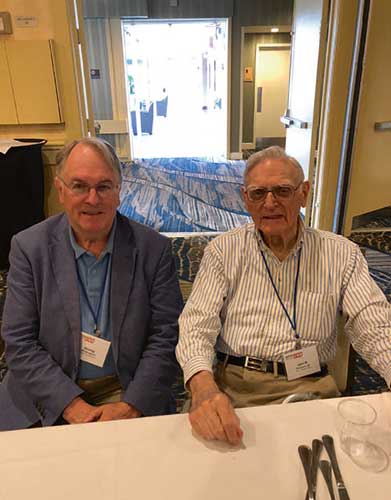
Figure 4. Stan Whittingham and John Goodenough working together at the Battery500 consortium in 2018 in Berkeley, California.
My family and final notes
I have been very fortunate in my life by having a very supportive family, starting with my late parents who supported my goals of being a scientist, of being a cactus fanatic and of my two-year move to California, which they told me later they knew would be permanent. My wife, Georgina, has been especially supportive over the last 50+ years putting up with the long hours and all the travel. She now has her own career as a Professor of Spanish and Latin-American literature at the Oswego campus of SUNY, and is also thoroughly enjoying interacting and teaching the younger generations. Our children now have children of their own, the oldest of whom are now in college. Both of them vowed when they were old enough, they would move back to California, which they did and all four of our grandchildren were born in the San Francisco Bay area. Besides our immediate family, I was joined in Stockholm by my brother William, a PhD chemist from Cambridge and my niece Helen, a PhD Materials Scientist also from Cambridge. Both live in Britain, as do my two sisters, Anne and Susan. The family is shown at the Nobel Ceremony in Figure 5.
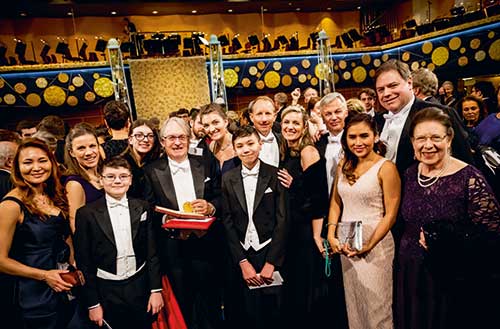
Figure 5. The Whittingham family at the Nobel Ceremony.
© Nobel Prize Outreach. Photo: Alexander Mahmoud.
© Nobel Media AB. Photo: Alexander Mahmoud.
My life and that of my family has changed dramatically since the Nobel’s recognition of our team’s work on lithium batteries, that was announced whilst I was at a battery meeting in Ulm, Germany. My wife was the last of the family to hear the news as her phone was off due to the Yom Kippur holiday on October 9th. That of my University has also changed; the excitement was palpable from the virtual press conference from my room in Ulm to the reception when I returned to Binghamton (Figure 6). It is indeed humbling to join all those famous previous Nobel Laureates. I was also very pleased to join my colleagues John Goodenough and Akira Yoshino in this recognition.
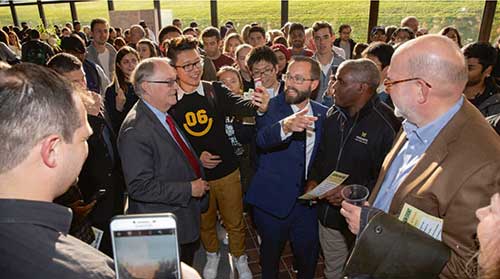
Figure 6. The excitement at Binghamton University on October 18th.
Photo: Jonathan Cohen.
Photo: Jonathan Cohen.
Finally, I must thank all my past and present friends and collaborators at Oxford, Stanford, Exxon, Schlumberger, Binghamton and the chemistry, materials and battery communities without whom my work and this recognition would not have been possible. It is my hope that this recognition will allow all of us to achieve a cleaner and more sustainable world for our children and grandchildren.
References
1. Peter G. Dickens and M. Stanley Whittingham, “The catalytic behavior of the tungsten bronzes”, Trans. Faraday Soc. 61 (1965), 1226.
2. M. Stanley Whittingham and Robert A. Huggins, “Transport properties of silver beta alumina,” Journal of the Electrochemical Society, 118 (1971), 1–6.
3. M. Stanley Whittingham and Robert A Huggins, “Beta alumina – Prelude to a revolution in solid state electrochemistry,” NBS Special Publication 364, Washington DC: U.S. Department of Commerce and National Bureau of Standards, 1972, 51–62.
4. M. Stanley Whittingham, “Electrical energy storage and intercalation chemistry,” Science, 192 (1976), 1126–1127.
5. M. Stanley Whittingham “The role of ternary phases in cathode reactions,” Journal of the Electrochemical Society, 123 (1976), 315–320.
6. M. Stanley Whittingham, “Chalcogenide Battery,” US Patent 4009052 and UK Patent 1468416, filed 1973 issued 1977.
7. M. Stanley Whittingham, “Chemistry of intercalation compounds: metal guests in chalcogenide hosts,” Progress in Solid State Chemistry, 12 (1978), 41–99.
8. M. Stanley Whittingham and Allan J. Jacobson, Intercalation Chemistry, Academic Press, 1982.
9. M. Stanley Whittingham, “Lithium Batteries and Cathode Materials”, Chemical Reviews, 104 (2004), 4271–4301.
10. M. Stanley Whittingham, “The Ultimate Limits to Intercalation Reactions for Lithium Batteries”, Chem. Rev., 114 (2014), 11414–11443.
11. M. Stanley Whittingham, Jia Ding, and Carrie Siu, “Can Multielectron Intercalation Reactions Be the Basis of Next Generation Batteries?,” Accounts of Chemical Research, 51 (2018), 258–264.
This autobiography/biography was written at the time of the award and later published in the book series Les Prix Nobel/ Nobel Lectures/The Nobel Prizes. The information is sometimes updated with an addendum submitted by the Laureate.
Nobel Prizes and laureates
Six prizes were awarded for achievements that have conferred the greatest benefit to humankind. The 14 laureates' work and discoveries range from quantum tunnelling to promoting democratic rights.
See them all presented here.
